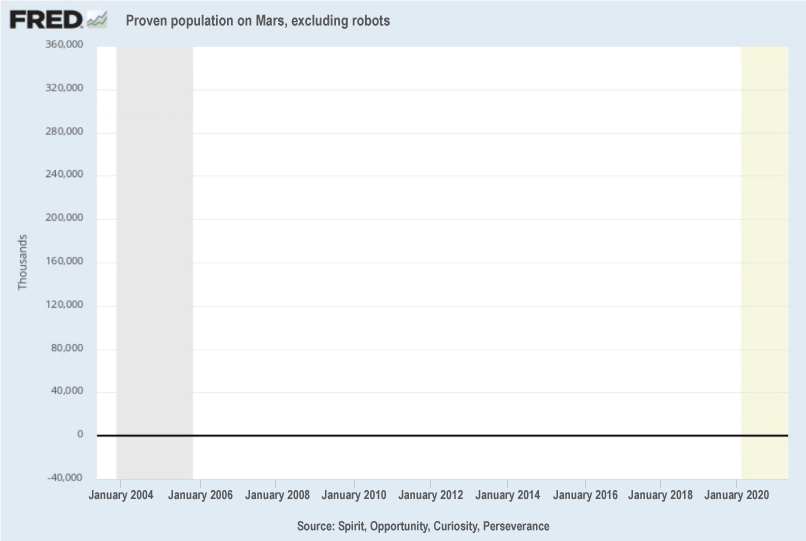You know FRED, but do you know ALFRED? ALFRED is ArchivaL FRED, which is pretty much what it sounds like: an archive of historical versions (or vintages) of FRED data. ALFRED is turning 15 years old, which is a nice opportunity to describe why recording data history is important.
Economic data are often revised over time as more and/or more-accurate information becomes available. Accuracy is important, and that’s what FRED provides. But the original, less-accurate vintages of the observations are important, too, as they tell the story of what information was known at the time. That’s what ALFRED provides.
Despite being 15 years younger than FRED, ALFRED is an old soul with a great memory that contains all the historical vintages of the series in FRED. Each time a data series is updated in FRED, the prior version of the series is stored and made available in ALFRED, with all of its prior vintages of data observations at specific points in time. ALFRED also records the metadata, such as series title and units, which may also have been revised.
How about an example? The ALFRED graph above shows the change in total employment reported by the Bureau of Labor Statistics (BLS). For now, let’s focus only on the observations for January 2008, right in the middle of the graph.
- The blue bars show the first observation for January 2008, released on February 1, 2008.
- The red bars show the next vintage, released on March 7, 2008.
- The green bars show the most-recent vintage available at the time of this post, released March 5, 2021.
In its initial release on Februrary 1, 2008, the BLS estimated a loss of 17,000 jobs (in blue). Over time, the BLS is able to gather more information about the number of people employed in the economy. So, their estimate was revised on March 7, 2008, to a loss of 22,000 jobs (in red). And with even more time to gather information, the BLS adjusted their estimate from a loss to a small gain of 11,000 jobs (in green) as of March 5, 2021.*
Now let’s fast forward to 2020 and another ALFRED graph for our second example. If we look at March 2020, we see that the change in number of employees was revised from -701,000 to -870,000 between the initial release (April 3, 2020) and the subsequent release (May 8, 2020). As of March 5, 2021, the change in number of employees had been revised again, to -1,683,000. Between April 2020 and March 2021, the BLS gathered information that led to a revision in the number of job losses that was almost twice what was initially estimated.
Data always tell a story, and it’s important to be aware that data change over time. ALFRED provides several advantages here. Not all the originating data sources or statistical agencies make prior vintages of data available on their website. Having access to real-time data allows researchers and analysts to model the economy at different points in time and evaluate policies using the data that were available when those policies were initially enacted. Real-time data also enable replication of prior research.
To learn more about ALFRED and its history, see the resources available in its help page.
*By the way, the monthly change in total employment as of January 2008 first became positive with the vintage released on February 4, 2011. Note also that the earlier vintages of some series have been pre-populated in ALFRED. However, the general case is that vintages start accumulating in ALFRED only after these data are initially added to FRED.
How these graphs were created: For the first graph, search ALFRED for “PAYEMS” and select the monthly, seasonally adjusted series. By default, ALFRED shows a graph with two sets of bars: the most recent vintage and the prior vintage. From the “Edit Graph” panel, use the Edit “Bar 1” option to select the vintage “2008-02-01” in the vintage selection dropdown menu or type the date in the “As-of date” box. From “Edit Bars,” use the “Edit Bar 2” option to select the vintage “2008-03-07.” With the “Add Bar” tab, search for “PAYEMS” in the search box and again select the monthly, seasonally adjusted series (units in Thousands of Persons). Click on the “Add data series” button. Under “Edit Bar 3,” select the vintage “2021-03-05.” Then change the units to “Change, Thousands of Persons.” Click on the “Copy to all” button to apply the unit change to all the series on the graph. Finally, adjust the start date of the graph to 2007-10-01 and the end date to 2008-04-01. For the second graph, use the “Edit Graph” panel’s “Edit Bars” tab to edit Bar 1 and Bar 2 by selecting the “2020-04-03” and “2020-05-11” vintages as before. Then, set the graph’s start date to 2019-12-28 and the end date to 2020-07-01.
Suggested by Maria Arias.


